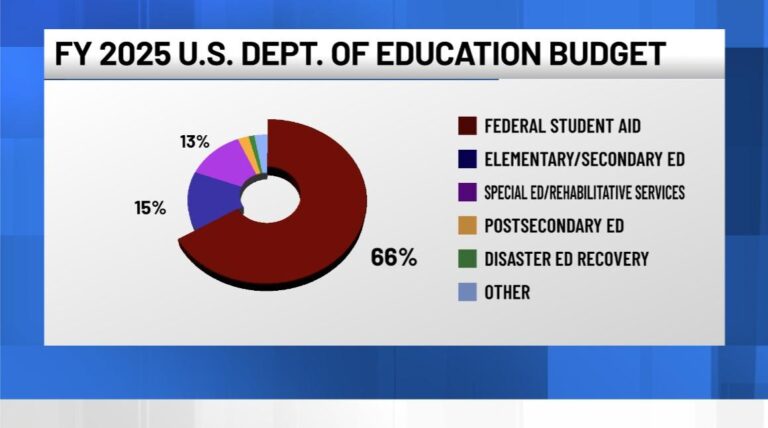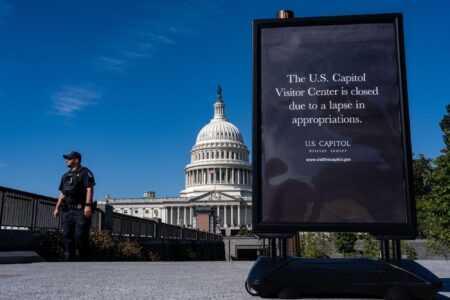Understanding the U.S. Department of Education: Budget, Workforce, and Political Controversies
Comprehensive Overview of the Department’s Budget and Strategic Funding Priorities
The U.S. Department of Education’s annual budget for the current fiscal year stands at roughly $75 billion, strategically allocated to promote equitable educational opportunities nationwide. A substantial share of this funding supports Title I grants, which are designed to assist schools serving economically disadvantaged students. Additionally, significant resources are dedicated to special education programs under the Individuals with Disabilities Education Act (IDEA), ensuring tailored support for students with disabilities. The department also prioritizes financial aid, channeling funds into Pell Grants and federal student loan programs to help alleviate the financial burden of higher education.
Key fiscal objectives emphasize:
- Advancing K-12 Education: Boosting investments in STEM education and digital learning platforms to equip students for a rapidly evolving technological landscape.
- Improving Higher Education Access: Expanding grant programs and work-study opportunities to lower barriers for marginalized and underrepresented populations.
- Fostering Accountability and Innovation: Enhancing transparency through data-driven approaches and supporting innovative educational models to elevate student outcomes.
| Funding Category | Budget Allocation (Billion $) | Purpose |
|---|---|---|
| Title I Grants | 15.5 | Support for students from low-income families |
| Special Education (IDEA) | 13.0 | Services for students with disabilities |
| Higher Education Grants | 27.4 | Pell Grants and institutional funding |
| Student Loan Programs | 12.1 | Subsidized and unsubsidized loans |
| Innovation & Accountability Initiatives | 7.0 | Research and educational reform efforts |
Department Workforce Composition and Functional Roles
According to the most recent data, the Department of Education employs about 4,400 full-time federal staff members distributed between its headquarters in Washington, D.C., and regional offices across the country. This team is responsible for a broad spectrum of duties, including crafting education policies, enforcing federal regulations, and managing critical services such as student financial aid processing. To optimize efficiency and reduce long-term personnel expenses, the department increasingly relies on contractors and external consultants for specialized tasks.
Prominent roles within the department encompass:
- Program Analysts: Design and assess federal education programs.
- Compliance Officers: Monitor adherence to civil rights laws and funding requirements.
- Financial Experts: Oversee budget management and grant auditing.
- Policy Advisors: Provide guidance on legislative and administrative education matters.
- Administrative Personnel: Manage internal communications and operational logistics.
| Division | Employee Count | Primary Responsibilities |
|---|---|---|
| Student Financial Assistance | 1,200 | Administration of loans and scholarships |
| Policy and Program Development | 900 | Creation of education initiatives |
| Enforcement and Compliance | 700 | Regulatory oversight and enforcement |
| Administrative Services | 1,600 | Support for daily operations |
Examining Former President Trump’s Proposal to Abolish the Department
Former President Donald Trump advocated for the elimination of the U.S. Department of Education as part of a broader initiative to curtail federal oversight and empower local education authorities. He contended that the department’s extensive regulations hinder innovation and impose unnecessary burdens on educators and school districts. From this viewpoint, dissolving the department would result in:
- Increased autonomy for states and local districts to develop curricula tailored to their communities.
- Reduced federal expenditures and streamlined bureaucratic processes.
- Expanded parental choice by fostering competition among public, charter, and private schools.
Opponents warn that such drastic measures could undermine protections for vulnerable student populations and weaken financial oversight. Supporters argue that the department’s annual budget—approximately $70 billion—could be more effectively allocated at the local level. The table below highlights key budget components relevant to this debate:
| Budget Category | FY 2023 Allocation | Proposed Reduction |
|---|---|---|
| K-12 Grants | $30 Billion | 40% |
| Student Financial Aid | $20 Billion | 15% |
| Administrative Expenses | $5 Billion | 50% |
Future Directions: Policy Recommendations for Federal Education Funding
Looking ahead, effective federal education funding requires a nuanced strategy that balances equity with innovation. Policymakers should focus on targeted investments that close achievement gaps while promoting cutting-edge learning technologies and workforce development programs. Sustained support for underserved rural and low-income districts is essential, especially in light of educational disparities exacerbated by recent national crises such as the COVID-19 pandemic. Priority areas include:
- Broadening access to early childhood education and expanding special education services
- Enhancing teacher recruitment, retention, and ongoing professional development
- Increasing transparency and accountability in fund distribution and program outcomes
Moreover, a collaborative approach that combines federal oversight with local flexibility can help establish clear, measurable goals to evaluate program success. Strengthening partnerships between the Department of Education and state agencies will improve resource efficiency, reduce redundant efforts, and support data-informed decision-making. The following table outlines suggested budget reallocations aligned with these strategic priorities:
| Funding Category | Current Percentage | Recommended Percentage |
|---|---|---|
| Title I Grants (Low-Income Schools) | 40% | 45% |
| Higher Education | 25% | 20% |
| Special Education | 15% | 20% |
| Vocational and Technical Training | 10% | 10% |
| Administrative and Oversight Costs | 10% | 5% |
Final Thoughts
The U.S. Department of Education continues to be a cornerstone institution in shaping educational policy, managing substantial federal funding, and employing thousands dedicated to enhancing learning outcomes nationwide. While debates over its budget and existence—such as former President Trump’s unprecedented proposal to abolish the department—highlight deep ideological divides, the agency’s future will ultimately be shaped by ongoing political dialogue and public engagement. As education remains a critical national priority, the department’s role in supporting students and schools will persist as a vital topic in policy discussions.







